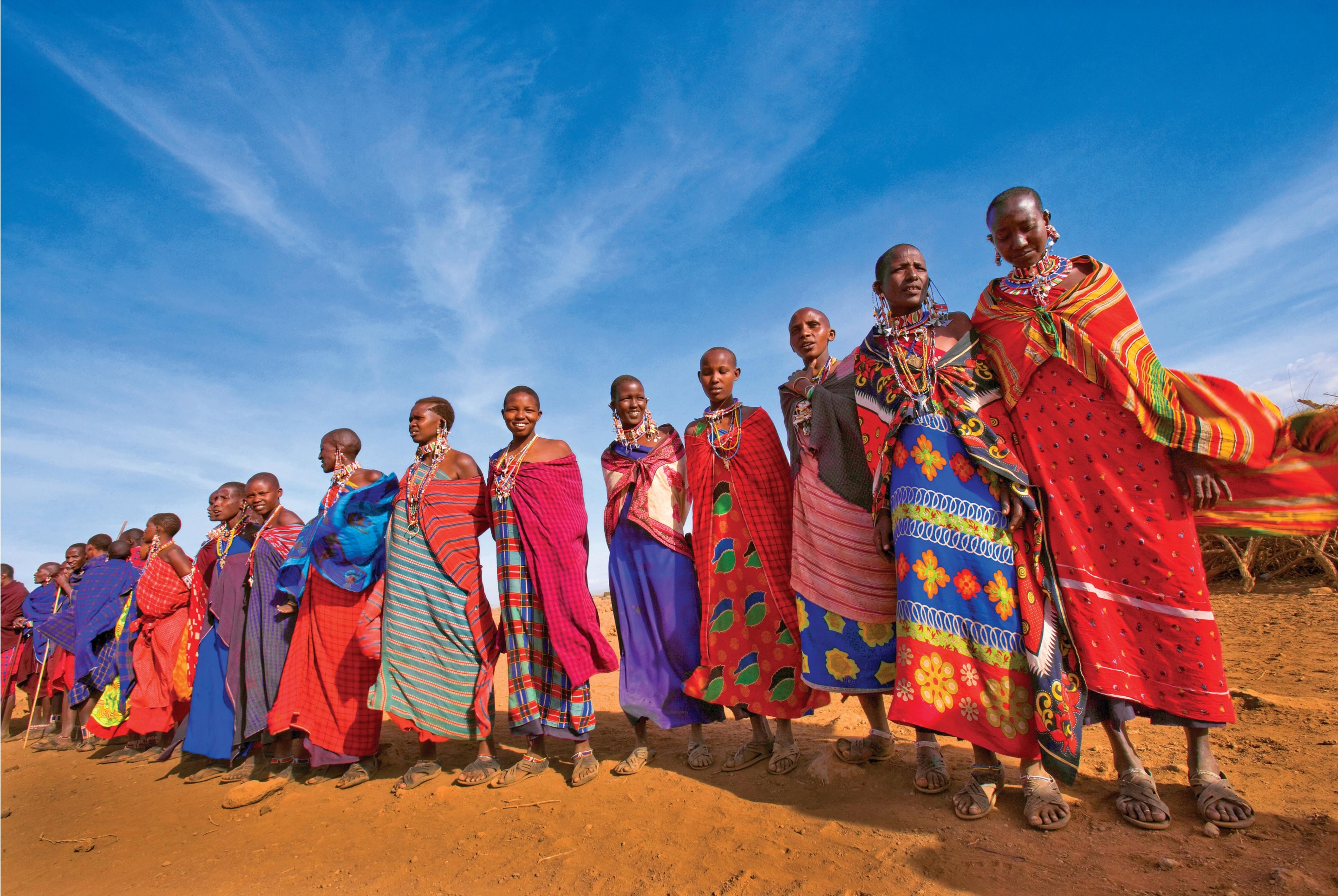You’re receiving this message because your web browser
is no longer supported
We recommend upgrading your browser—simply click the button below and follow the instructions that will appear. Updating will allow you to accept Terms and Conditions, make online payments, read our itineraries, and view Dates and Prices.
To get the best experience on our website, please consider using:
- Chrome
- Microsoft Edge
- Firefox
- Safari (for Mac or iPad Devices)
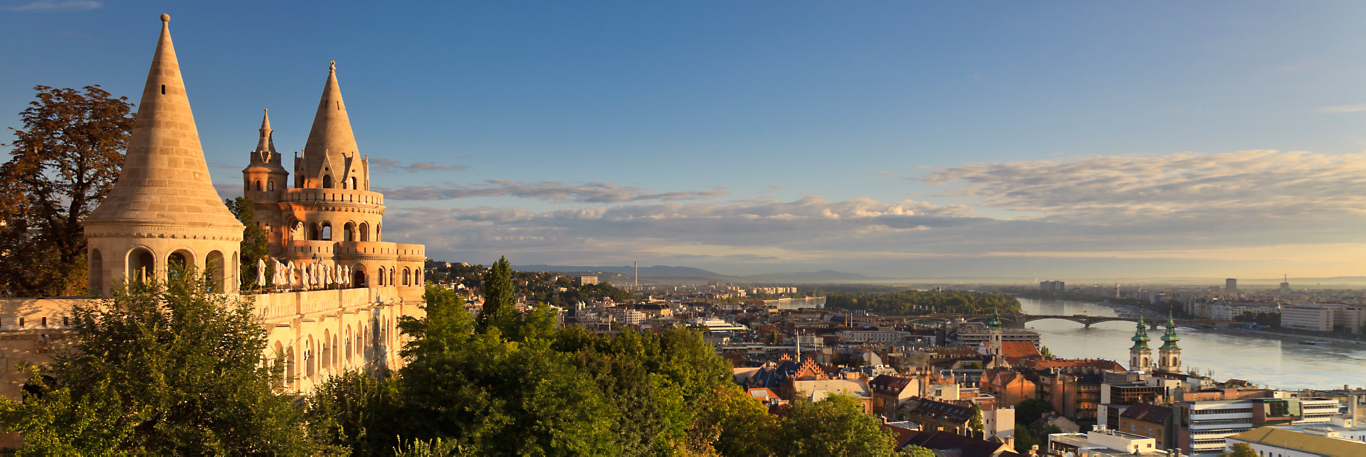
hungary
Get the Details On Our Hungary Adventure
Find out more about the adventure, including activity level, pricing, traveler excellence rating, included meals, and more
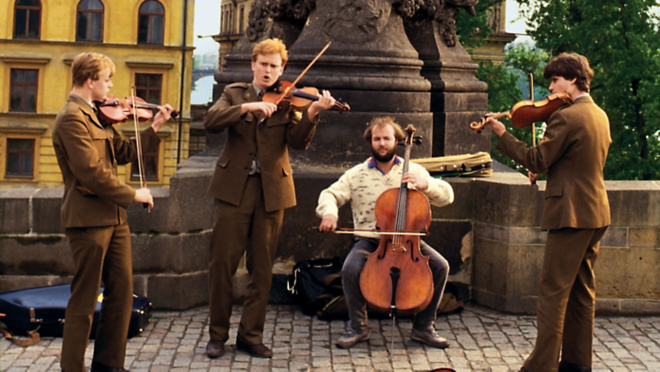
Spend 3 days in Hungary on
Jewels of Bohemia: Czech Republic, Slovakia & Hungary
O.A.T. Adventure by Land
Czech Republic: Prague, Cesky Krumlov, Slavonice | Slovakia: Bratislava | Hungary: Budapest
Adventure Details
Add Adventure
including international airfare
per day
*You must reserve the main trip to participate on this extension.
**This information is not currently available for this trip. Please check back soon.
You may compare up to Adventures at a time.
Would you like to compare your current selected trips?
Yes, View Adventure ComparisonHungary: Month-By-Month
There are pros and cons to visiting a destination during any time of the year. Find out what you can expect during your ideal travel time, from weather and climate, to holidays, festivals, and more.
Hungary in January-February
Hungary’s core winter months, January and February are the coldest months of the year—and often the wettest, too. Luckily, traditional Hungarian cuisine, which leans toward heavy foods and strong drinks, is the perfect antidote to the season’s chill: Sip traditional mulled wine and Pálinka, a Hungarian fruit brandy, to warm up, or dig into heartier fare like harcsa paprikás (a paprika fish stew) or hurka (a type of liver or blood sausage).
As this is the low season, many tourist attractions can be closed, and it’s wise to call ahead. But the Hungarian theater season is in full swing during the winter months, making this the best time of year to see an opera or show.
Holidays & Events
- January-Mid-February: From the last day of Christmas celebrations on January 6 through Ash Wednesday, Hungary enters a festive, colorful period known as Farsang. Similar to Carnival in other countries, Farsang features masquerade balls, lively parades, and lots of loud noise to scare off winter and welcome spring.
Must See
If you’re in Budapest during the winter months, be sure to make a visit to the City Park Ice Rink. This massive open-air ice rink in front of the Vajdahunyad Castle is a popular spot for locals and visitors alike to take advantage of the season’s activities.
Watch this film to discover more about Hungary
Hungary in March-April
Spring is one of the best times to visit Hungary: the weather begins to warm up, flowers are in bloom, and many outdoor markets and tourist attractions reopen after the winter’s inactivity. At the same time, fewer tourists mean less crowds, less expensive rates, and more room to explore.
Spring festivals, such as the Budapest Spring Festival, are common throughout the country during March and April and are a joyful way to greet the new season.
Holidays & Events
- Mid-March: Hungary has three National Holidays each year, of which the March National Holiday commemorates the Hungarian Revolution of 1848. Celebrating Hungary’s struggle for freedom and democracy, the holiday is marked by free entrance to Hungary’s national museums, a ceremonial speech by the Prime Minister, and pins in the national colors that Hungarians proudly display.
- Late March: Each year, Budapest dedicates a day to celebrating the art of French patisserie. On what's known as Macaron Day, bakeries throughout the city display their finest sugary creations, and visitors can learn to make the finicky pastry during an event in Elizabeth Square.
- Late March-April: Hungary’s largest cultural event, the Budapest Spring Festival celebrates the arrival of spring with a host of musical performances. Over three weeks, take in performances of opera, jazz, folk, and classical music in some of the city’s most vaunted performance venues.
Must See
Hungary has a proud and storied tradition of folk art, and at no time is this more visible than at Easter. Colorfully dyed and intricately patterned, Hungarian Easter eggs make beautiful decorations for this spring holiday.
Watch this film to discover more about Hungary
Hungary in May-June
Warm, mild weather continues in May, when many Hungarians can be found taking advantage of the season at outdoor cafes and bars. While June marks the start of summer, it is also the rainiest month of the year—pack a rain jacket and take in the country’s lush vegetation and colorful blooms, which benefit from frequent seasonal showers.
Holidays & Events
- Mid-June: The Danube Carnival is a two-week celebration of all things dance, taking place along the banks of Hungary’s most famous river. The festival features an international dance competition, a Carnival Parade down the Danube promenade, and an elegant evening gala, as well as performances by contemporary and Hungarian folk dancers.
- Late June-early July: Beer lovers won’t want to miss this one: Sample the finest Czech (and Hungarian) brews at the Czech Beer Festival, which features both internationally known brands and craft beers from local microbreweries. Egészségére! (That’s cheers in Hungarian.)
Watch this film to discover more about Hungary
Hungary in July-August
The summer months bring plenty of sunshine—and crowds—to Hungary. To celebrate the good weather, many festivals and special events—like live music concerts at City Park and the Budapest Summer Festival on Margaret Island—take place throughout the country. This is also a great time of year to take advantage of Hungary’s abundance of outdoor thermal baths and pools.
Holidays & Events
- Early July-early August: Each summer, the Vajdahunyad Castle in Budapest hosts a summer music festival in its fairytale-like setting. Performances range from classical to Hungarian folk music.
- Mid-August: The Sziget Festival is one of the hippest music festivals in Hungary today. Held on an island in the Danube, the week-long festival has become one of the biggest rock parties in Europe, featuring more than 1,000 performances and nightly firework displays.
- August 20: The greatest public holiday of the year, St. Stephen’s Day celebrates Hungary’s founding with patriotic events and a spectacular fireworks show over the Danube.
Watch this film to discover more about Hungary
Hungary in September-October
Fall is a pleasant time to visit Hungary: the days are still warm, but the crowds of summer are long gone. And Hungary is often the lucky recipient of “Indian summers,” when the weather becomes summer-like again after a cool spell. This is an excellent time of year to explore the country’s outdoor activities: Take a hike around Lake Balaton (central Europe’s largest lake) or stop by a local plein-air market to sample the fall harvest’s bounty.
Holidays & Events
- Mid-September: For three days each year, Heroes’ Square in Budapest is transformed into a giant racetrack for the National Gallop Festival, a celebration of Hungary’s equestrian tradition and the famed Hussar culture.
- Early October: Eat, drink, and be merry at one of Hungary’s Oktoberfest beer festivals. While smaller than Munich’s original Oktoberfest, these festivals have plenty of food, performances, and, of course, beer to keep festival-goers entertained. Events are held throughout the country, but the largest Oktoberfest is in Budapest.
- October 23: This National Holiday commemorates the 1956 Hungarian Revolution, when Hungarians overthrew Stalin’s oppressive communist regime and appointed Imre Nagy as a liberal prime minister in his place. All shops and public institutions are closed on this day.
Watch this film to discover more about Hungary
Hungary in November-December
With shorter days and colder temperatures, November and December mark the beginning of the low season in Hungary. Snow and rain are frequent in these months, but the country’s festive Christmas markets and seasonal good spirits make up for the gloomy weather.
Holidays & Events
- November 1: Like many Catholic nations, Hungary celebrates All Saint’s Day on the first of November. On this day, Hungarians visit the cemeteries where their deceased family members are buried, decorating their graves and lighting candles in their honor.
- November 11: Known as St. Martin’s Day, this traditional feast day is celebrated by drinking wine from the new harvest and dining on goose. Many restaurants offer goose specials throughout the month of November, and proudly display their new wines.
- December 6: The Christmas season officially begins on December 6 in Hungary, when Mikulás (the Hungarian version of Santa Claus) leaves presents for children in their boots.
Must See
The highlight of the holiday season in Hungary is undoubtedly the nation’s elaborate Christmas markets. Two of the best: Budapest Basilica’s Christmas markets and the Christmas markets at Vörösmarty Square, which are both known for their elaborate market stalls and bright, cheerful string lights.
Watch this film to discover more about Hungary
Average Monthly Temperatures
High Temp Low Temp
Hungary Interactive Map
Click on map markers below to view information about top Hungary experiences
Click here to zoom in and out of this map
*Destinations shown on this map are approximations of exact locations
Budapest
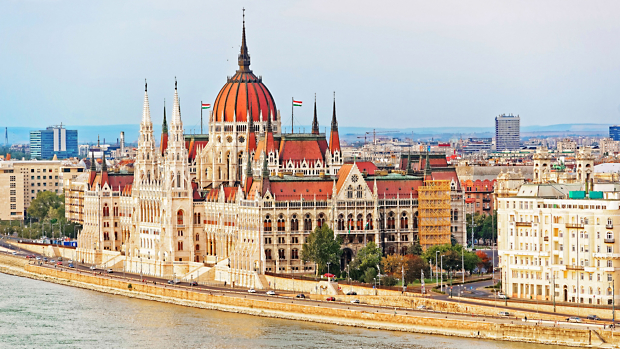
With its grand buildings, elegant architecture, and lavish spas, Budapest oozes old world glamour. This Hungarian capital is strung along both banks of the Danube River, whose waters cleave the city neatly into Buda and Pest. And with stunning bridges sprawling across the scenic Danube, wonders on either side of the city become accessible to explorers seeking to take in the city's European charm. In fact, with plenty of attractions within close proximity, the city's cafe- and shop-lined streets are easily explored on foot.
Both sides of Budapest will come to life during an included walking tour: Take a stroll across one of the city’s ornate bridges, or admire the UNESCO-protected fin de siècle architecture, an opulent blend of Art Nouveau and neoclassical styles. The brilliant dome and stately spires of Parliament command attention on the Pest Embankment; on the Buda side, historic Castle Hill affords some of the best views in the city.
Discover Budapest with O.A.T. on:
Budapest Baths

The Hungarian culture of “taking the waters” dates back 2,000 years to Roman times. The country sits on one of the richest geothermal resources in the world and draws visitors seeking the healing powers of its medicinal waters.
Budapest, with its 125 thermal springs and plethora of public bath houses, is nicknamed the “City of Spas.” Its baths feature a series of thermal pools progressing from warm to hot, and many also include saunas, steam rooms, and massage treatments. Most are now mixed gender and, as evidence of their integral place in Hungarian life, are popular gathering spots on weekend nights. Visit the Szechényi Baths, the largest in the city, during free time or take a dip in the Gellért Baths and admire the decadent Art Nouveau décor while you bathe.
Visit a Budapest bath with O.A.T. on:
Danube River

Europe’s second longest river and the longest in the EU, the Danube flows through the heart of Hungary.
A visit to Budapest will bring you in close contact with this ancient waterway. A series of handsome bridges spans the Danube, connecting the city’s two halves and creating the Hungarian capital’s signature skyline. The magnificent Szechényi Chain Bridge was the first to link Buda and Pest; it is the most famous (and most photographed) bridge in the city, and was considered a wonder of the world at the time of its construction. Visit at night to see the floodlit Szechényi in all her glory as the Danube sparkles below.
In sharp contrast to Szechényi’s classic splendor, Elizabeth Bridge stands as a hallmark of modernism. Originally built at the turn of the century, this former emblem of elegance was destroyed during World War II and was replaced with a sleek silhouette during the post-war period; it is now one of the busiest bridges in the city.
Nearby, the diminutive Liberty Bridge is known for its distinctive green color and ornate wrought ironwork. Budapest’s shortest bridge is also its most patriotic: Two turuls, the mythological birds of prey and national symbol of Hungary, sit atop Liberty’s spires, looking out proudly over the Danube.
Explore the Danube River with O.A.T. on:
Gyor

Known as the City of Meetings, Gyor sits at the meeting point of the Danube, Rába, and Rábca rivers, and has been an important regional hub since Roman times. Today, Gyor is lauded for the beautiful assemblage of Baroque and neoclassical architecture that lines the city’s pedestrianized streets; in 1989, Gyor was even granted the Europa Nostra prize to preserve its architectural heritage. Visit the recently renovated City Hall for a stellar example of neoclassicism, or soak up the leisurely pace of Hungarian life outside Budapest as you stroll through the city’s picturesque squares.
Discover Gyor with O.A.T. on:
Featured Reading
Immerse yourself in Hungary with this selection of articles, recipes, and more
RECIPE
Hungry for a Hungarian meal? Traditional goulash is the perfect main dish, followed by sweet Rigo Jansci for dessert.
Hungarian Cuisine: Going Beyond Goulash
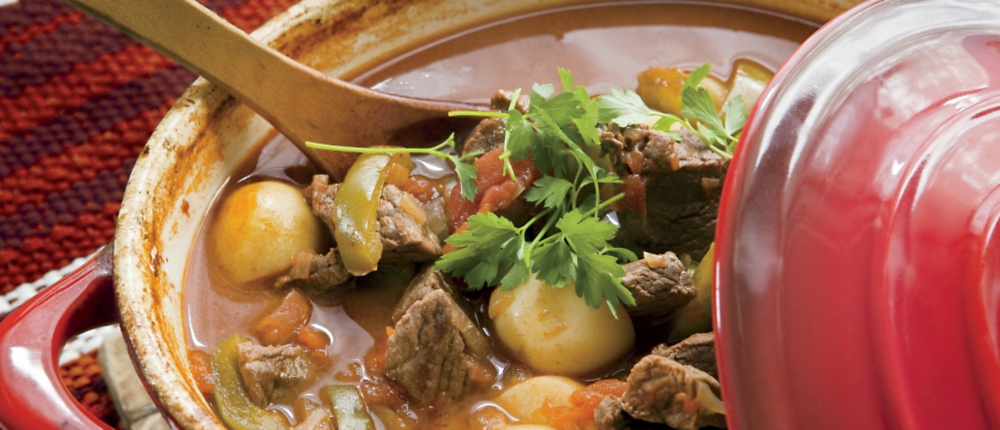
by Laura Graff, from Insider
When you think of Hungarian food, goulash and paprika are likely the first things that come to mind. But did you know that Hungary has thriving viticulture and pastry-making traditions as well?
Gulyas, the Hungarian word from which “goulash” originates, means herdsman, and this dish originated with the cowboys (csikos) who roamed the Great Hungarian Plain (puszta) with their cattle. Originally slow-cooked over an open flame in a cast-iron pot called a bogracs, traditional goulash consisted of onions fried in lard, paprika—a spice made of dried, ground capsicum pepper that first arrived in the Hungarian city of Szeged in the 17th century—meat, water and potatoes, along with perhaps some carrots and parsnips, if they were available.
As this hearty dish made its way back to the towns and villages, different variations were born. Goulash morphed into two popular dishes: a soup, leves, and a stew, porkolt. These days, goulash typically refers to a beef and potato soup, flavored with paprika and onions. Sometimes tomatoes are included but in traditional recipes, there are no tomatoes—the reddish hue comes from paprika alone. The most common variety of paprikash (a variation of porkolt, distinguished by the presence of sour cream) is paprikas csirke, chicken cooked in paprika sauce, and typically served over galuska (pasta dumpling) or noodles.
The “is it a soup or is it a stew?” debate rages on in another of Szeged’s signature dishes: Szegedi halaszhe. In restaurants, it’s called fish chowder, soup, or stew. Among the locals, it’s known as fish goulash, since the flavors of sweet and hot paprika— there are at least six different varieties—are an integral component of this much-loved dish. Since Hungary is completely landlocked, the fish soups of Hungary are made with fresh water fish, such as carp, pike, sturgeon, and catfish from the Danube and Tisza rivers and Lake Balaton, near the Croatian border.
In the vineyards near Lake Balaton grow grapes used to make a nectar-like dessert wine called Tokaji Eszencia. This extremely sweet wine was favored by composers like Beethoven, Haydn, and List, as well as numerous members of European royalty during the 18th and 19th centuries. Another wine for which Hungary is famed is Egri Bikaver, a hearty red wine from the north widely known as “Bull’s Blood.” The legend of this wine dates back to Suleyman the Magnificent’s invasion of Hungary with his Turkish troops. The townspeople of Eger were able to defend their home with such gusto, a rumor spread among the Turks that the wine they drank was mixed with bull’s blood, which gave them strength to fend off the attacks. Typically served with game dishes, Bull’s Blood also pairs well with goulash and paprikash.
And for dessert? You’ll find two of Hungary’s favorites, Dobos torte and Rigo Jansci, in the coffeehouses of Budapest, Hungary’s capital city which straddles the Danube River. Steeped in culinary lore, each confection traces its origins to the end of the 19th century. Dobos torte is a five-layer sponge cake, interspersed with chocolate buttercream (likely a Parisian-inspired innovation), and topped with caramel. It was created by Hungarian pastry chef Jozsef Dobos, and presented Budapest’s National General Exhibition, where Franz Joseph I was among the first to taste it. Dobos kept the recipe a secret for more than 20 years, until he retired.
Rigo Jansci was created by, and named for, a violin-playing Hungarian gypsy who wooed an American heiress away from her husband, the Prince of Belgium. According to the story, he collaborated with a pastry chef to create the cake— spongy chocolate layer cake with rich chocolate cream in the middle—for her.
From the savory to the sweet, and the shores of Lake Balaton to the banks of the Danube, Hungary’s culinary delights are deeply rooted in its traditions—and ultimately delicious. Jo etvayat! (Bon appetit!)
Traveler Photos & Videos
View photos and videos submitted by fellow travelers from our Hungary adventures. Share your own travel photos »
